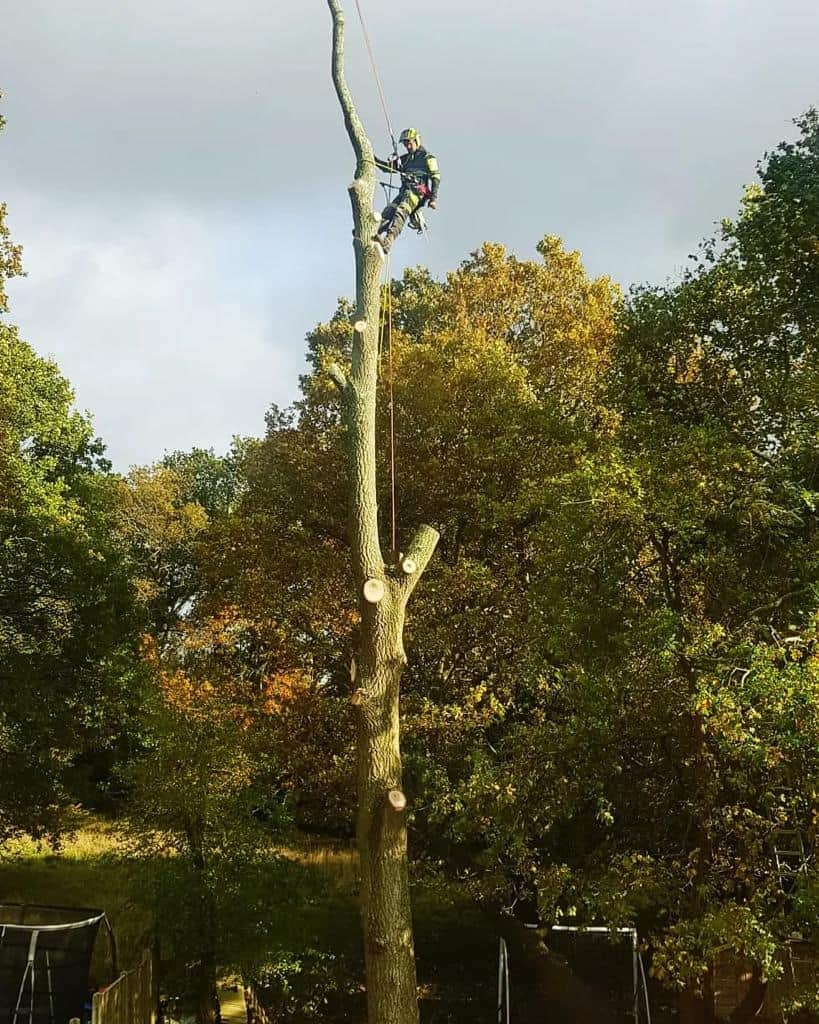After tree felling, many homeowners assume that the job is complete. However, without proper post-felling management, trees can begin to sprout new growth from the remaining stump or roots. This can lead to further maintenance issues and potential damage to surrounding areas.
For homeowners in Swanmore, Hampshire, taking the right steps after tree felling can prevent unwanted regrowth and ensure a clean, safe landscape.
Why Does a Tree Regrow After Felling?
Even after a tree is cut down, its root system remains alive and continues to store energy. Many species, such as willow, sycamore, and poplar, are particularly resilient and will attempt to regenerate by sending up new shoots. If left unmanaged, these shoots can grow into small trees, requiring further removal.
Effective Methods to Prevent Unwanted Regrowth
1. Stump Grinding
Stump grinding is one of the most effective ways to stop regrowth. A specialised machine grinds the remaining stump below ground level, removing the main source of energy for new shoots.
Benefits of stump grinding:
- eliminates the risk of regrowth
- improves the appearance of the landscape
- prevents potential trip hazards
- allows for replanting or lawn restoration
2. Chemical Stump Treatment
Applying a herbicide to the stump immediately after felling can prevent the tree from sprouting new growth. The chemicals penetrate the stump and root system, stopping regeneration.
Key considerations for chemical treatment:
- use an appropriate herbicide for the tree species
- apply the treatment to freshly cut wood for best results
- follow safety guidelines and environmental regulations
3. Regular Root Monitoring
Even after stump grinding or chemical treatment, some trees may still attempt to regrow through their roots. Regularly checking for new shoots and removing them promptly can help exhaust the remaining energy reserves.
Steps to monitor root regrowth:
- inspect the area for new shoots every few weeks
- cut any new growth as soon as it appears
- continue monitoring for several months to ensure no further regrowth
4. Digging Out the Stump and Roots
For smaller trees or shallow-rooted species, manually removing the stump and roots can be an effective solution. This method is more labour-intensive but ensures that no part of the tree remains to sprout new growth.
Steps for manual removal:
- dig around the stump to expose the main roots
- cut through large roots using a saw or axe
- pull the stump out with leverage or mechanical assistance
5. Covering the Stump to Starve It of Sunlight
If immediate removal isn’t an option, covering the stump with a tarp or heavy material can deprive it of sunlight and air, preventing regrowth. Over time, the lack of photosynthesis will cause the roots to die.
Best practices for covering a stump:
- use a dark, heavy-duty tarp to block sunlight
- secure the covering with rocks or soil
- check periodically and leave in place for several months
When to Call a Professional Tree Surgeon
While some methods can be managed by homeowners, certain tree species or larger stumps may require professional assistance. If tree regrowth persists or if the stump is in a difficult-to-reach area, expert tree surgery services in Swanmore, Hampshire, can provide a long-term solution.
Conclusion
Preventing unwanted regrowth after tree felling requires the right approach, whether through stump grinding, chemical treatment, or regular monitoring. Homeowners in Swanmore, Hampshire, can ensure their landscape remains clean and free from regrowth by choosing the best method suited to their needs.
For expert stump removal and tree surgery services, LM Tree Surgery Swanmore provides professional solutions to prevent regrowth and maintain your outdoor space. Contact us today for advice and assistance.
Call us on: 01489 358 695
Click here to find out more about LM Tree Surgery Swanmore
Click here to complete our contact form and see how we can help with your tree’s needs.

